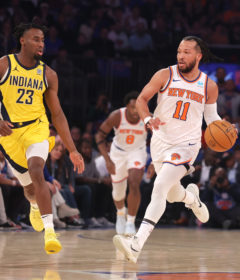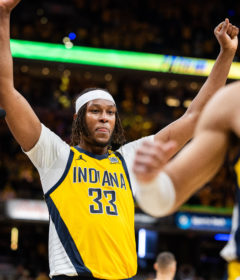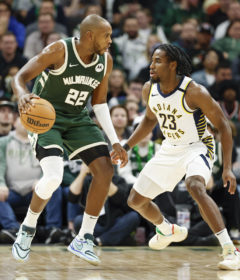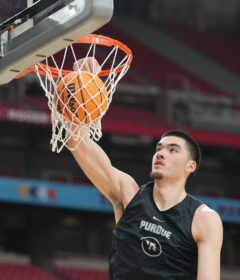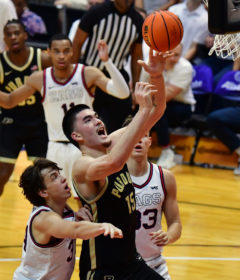Butler Notebook: Clarke’s point guard play among trends to watch
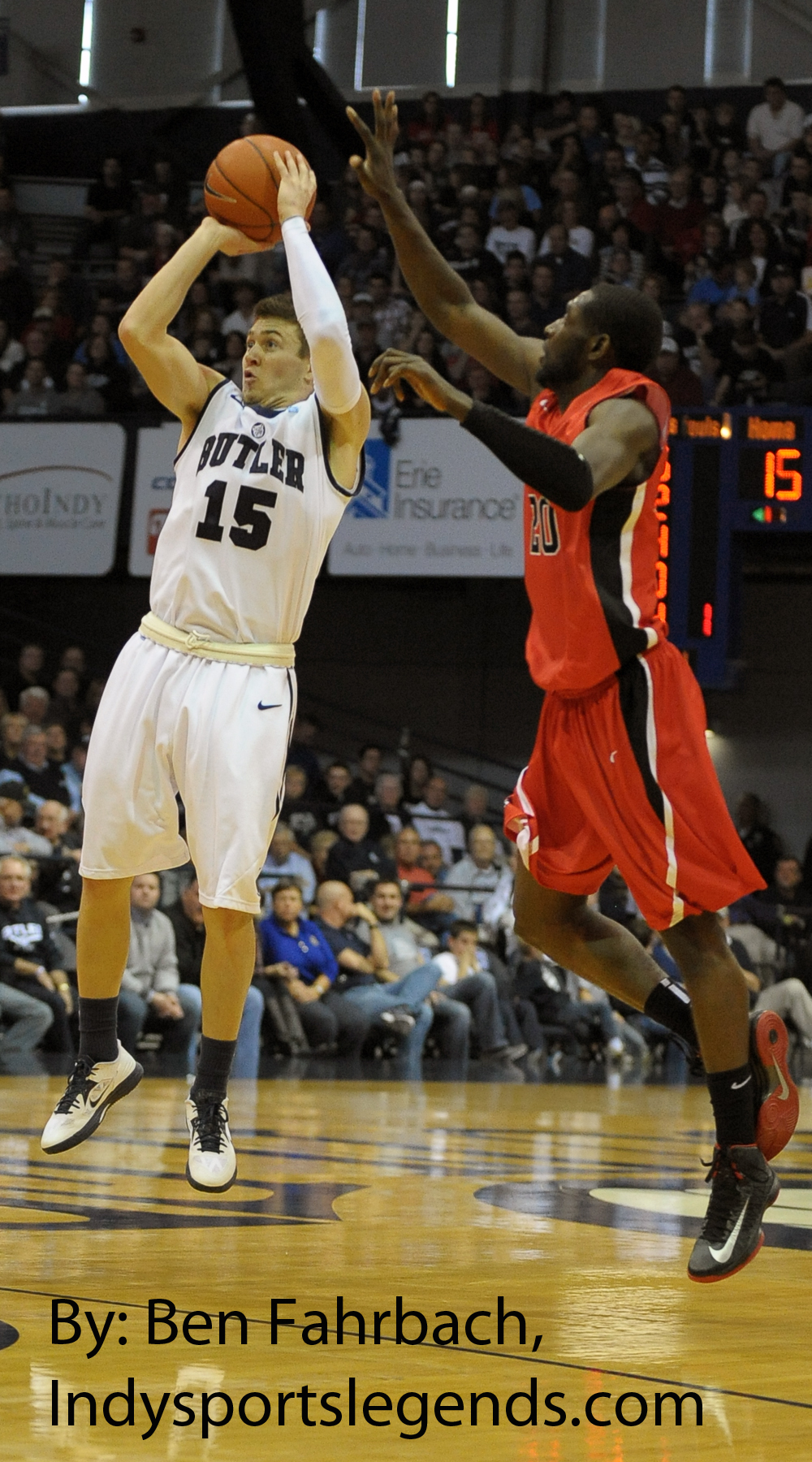
By CHRIS GOFF
ISL Correspondent
Going into Atlantic 10 play, Butler has won nine in a row. The last game against New Orleans was far from a masterpiece, but maybe the Bulldogs just wanted to get a rough shooting night out of the way before conference season.
Most of the vibes are good ones.
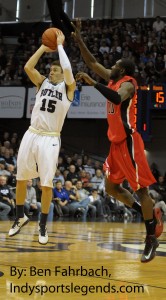
Butler’s frontcourt is improved. It features three players comfortable on the interior. Andrew Smith and Roosevelt Jones have made strides from last season. Khyle Marshall has taken his rebounding to new heights. In the backcourt, senior transfer Rotnei Clarke is a knockdown shooter who doesn’t need a lot of space to get his shot off. That’s the type of inside-outside balance that makes Butler so versatile and capable of winning in different ways.
It’s all added up to a 12-2 start, Butler’s best since it won 19 of 20 to open the 2008-09 season. The Bulldogs haven’t lost since Nov. 21.
Let’s examine a few trends to watch through January.
SORTING OUT THE GUARD ROTATION
At 6-foot-6, Kellen Dunham is nominally a guard; more often than not, he’s the sub when Jones needs a breather. But coach Brad Stevens has used Dunham alongside Jones, too. This has the effect of shortening the guard rotation. To this point, Dunham has averaged 28 minutes a game – a lot. As he improves, grows comfortable in his role and inevitably begins to convert 3-pointers at a better rate, his minutes, if anything, will only increase. It’s possible Dunham returns to the starting lineup, but for purposes of this discussion, that prospect is moot. His minutes will be the same either way.
What intrigues is whether Stevens will use one or two reserves in the backcourt rotation along with Clarke, Dunham and current starter Alex Barlow. Or, because of the talents of Clarke and Dunham and the shortcomings of other options, would Stevens consider going with just three players at guard on a regular basis?
On Stevens’ two best teams at Butler – the ones that went to back-to-back national championship games – he used four-man backcourts. But Stevens is a proactive coach willing to experiment and one prone to irregular patterns in his use of role players. (See: the case of Jackson Aldridge, who played 21 minutes against Marquette but never left the bench against Northwestern or Evansville, or Erik Fromm, who played 20 minutes against Indiana and five against Evansville.)
Here’s how we know Stevens hasn’t yet settled on how to use this year’s roster. He has 10 players averaging at least eight minutes a game. History suggests Stevens is going to rely on no more than nine regulars and would probably like to decide on eight. Aldridge, Fromm, Kameron Woods and Chase Stigall are the players whose role is uncertain. Stigall is a senior shooting guard. Aldridge is a sophomore point guard. Neither has played well. Can one or both solidify a spot? Or are the backcourt minutes simply streamlined in favor of Clarke, Barlow and Dunham? The situation bears watching.
CLARKE AT POINT GUARD
Fourteen games into the season, and Clarke has more turnovers than assists. His pure point rating (a measure of a player’s ability to handle and create offense for teammates) is -3.0, which is poor for any guard, let alone a floor general. Clarke switched to point guard for his senior year partly out of necessity. Early returns say this isn’t working. Stevens seems to concede it, too, as more and more of the ballhandling chores are going to Barlow and Jones, with Clarke darting around screens like the off-guard he was at Arkansas.
When Fromm, Marshall and Smith (all big men) have better pure point ratings than the point guard, it’s time to talk. Butler runs more post-ups than is the norm, and nearly four in 10 shots come from behind the arc. Still, in spite of a de-emphasis on dribble penetration, someone still needs to swing the ball, get it to the right places, protect it against defensive pressure and pass it into tight spaces when the bigs come open at the basket. So far, Clarke has not looked like the man for the job, but his performance could level with time.
TEAM IDENTITY
Butler’s often been thought of as a team built around rebounding and defense, and Stevens’ recent teams have more or less won by being strong in those areas. This version of the Bulldogs is winning more on the strength of its ability to score. They guard well and are improving. Atlantic 10 play will allow Butler’s identity – which could still go in a number of directions – to fully crystallize.
Follow Chris Goff on Twitter: www.twitter.com/chrisgoff_ISL.
Follow Indy Sports Legends on Twitter: www.twitter.com/cliffbrunt_isl.

